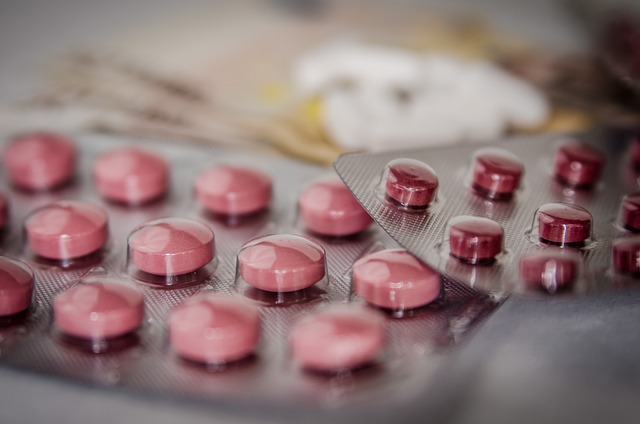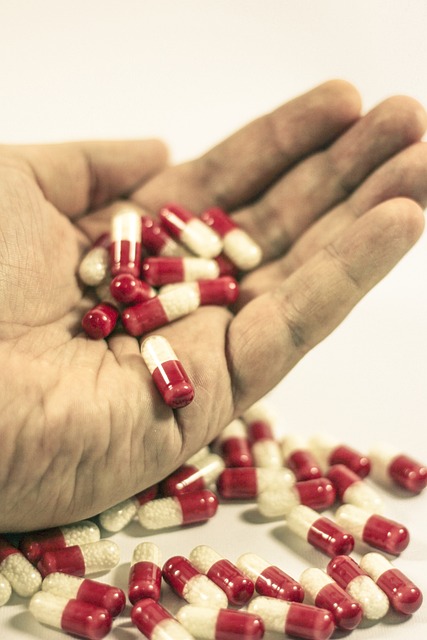GLP-1 drugs, a novel class of type 2 diabetes management medications, have gained global traction due to their dual benefits in glycemic control and weight management. With increasing market demand, these agonists act as natural hormone mimics, offering improved patient outcomes compared to traditional insulin therapy. Key factors driving growth include effective blood sugar regulation, reduced weight, and decreased hypoglycemia risk. The cost-effectiveness of GLP-1 drugs is influenced by R&D expenses, production complexity, market competition, and indirect healthcare costs. Affordability can be enhanced through insurance coverage, patient assistance programs, and generic versions. Case studies demonstrate significant cost savings and improved health outcomes with GLP-1 therapy, positioning these drugs as a cost-effective diabetes management strategy. Future innovations aim to improve delivery methods and reduce production costs, making them more accessible for patients worldwide.
“The rising cost of healthcare, particularly for chronic conditions like diabetes, has prompted a search for cost-effective treatments. Among the advancements in diabetes management, GLP-1 receptor agonists have emerged as promising options. This article delves into the economic viability of GLP-1 drugs, exploring their mechanism, market dynamics, and financial implications. We analyze direct and indirect costs, consider pricing factors, and present strategies for improving patient access. Additionally, we review successful case studies and discuss future innovations aimed at making GLP-1 drugs more affordable.”
Understanding GLP-1 Receptor Agonists and Their Role in Diabetes Management

GLP-1 receptor agonists (GLP-1 drugs) are a class of medications that mimic the effects of a natural hormone called glucagon-like peptide-1 (GLP-1). These drugs play a crucial role in diabetes management, particularly for individuals with type 2 diabetes. By stimulating the GLP-1 receptors in the body, they help regulate blood sugar levels, promote insulin production, and reduce appetite, leading to improved glycemic control and weight management.
The primary mechanism of action involves enhancing insulin secretion in a glucose-dependent manner, which helps lower blood sugar levels after meals. Additionally, GLP-1 drugs slow down gastric emptying, contributing to feelings of fullness and reduced food intake. This dual action not only makes them effective in treating diabetes but also offers potential benefits for weight loss, making them valuable tools in the comprehensive management of metabolic disorders.
The Current Landscape of GLP-1 Drugs: Market and Usage Overview

The current landscape of GLP-1 drugs is characterized by a growing market presence and increasing usage globally. These drugs, known as GLP-1 receptor agonists, mimic the effects of the natural hormone glucagon-like peptide-1 (GLP-1) to regulate blood sugar levels in individuals with type 2 diabetes. The market for GLP-1 drugs has expanded significantly due to their demonstrated efficacy and improved patient outcomes compared to traditional insulin therapy. Key players in this space offer a range of products, including both injectable and oral formulations, catering to diverse patient needs and preferences.
GLP-1 drugs are increasingly being adopted as a first-line treatment for type 2 diabetes, thanks to their ability to lower blood sugar levels, reduce weight, and decrease the risk of hypoglycemia. This widespread usage has led to robust clinical data supporting their cost-effectiveness and safety profiles. As a result, healthcare providers and insurance companies are recognizing the value these drugs bring, driving further market growth. The competitive landscape is dynamic, with continuous innovation focused on enhancing drug delivery methods and improving patient compliance.
Cost Analysis: Direct and Indirect Expenses Associated with GLP-1 Therapy

The cost-effectiveness of GLP-1 receptor agonists (GLP-1 drugs) is a multifaceted consideration, as it encompasses both direct and indirect expenses associated with therapy. Direct costs include the pharmaceutical itself, which can vary widely depending on brand and generics, insurance coverage, and patient out-of-pocket expenses. Additionally, indirect costs such as medical visits, laboratory tests, and monitoring procedures contribute to the overall financial burden.
However, GLP-1 drugs offer potential long-term savings due to their ability to reduce comorbidities and improve glycemic control, thereby decreasing the need for intensive insulin therapy or other diabetes-related treatments. This can result in significant cost savings for healthcare systems and patients alike. Furthermore, recent studies suggest that these drugs may have cardiovascular benefits, adding another layer of potential cost-effectiveness by reducing events requiring hospitalisation and prolonging patient lifespans.
Factors Influencing the Price of GLP-1 Receptor Agonists

The cost of GLP-1 receptor agonists, a key class of drugs for managing type 2 diabetes, is influenced by several factors. One major determinant is research and development (R&D) expenses. Given that these medications are relatively new, significant investment has been required to discover, develop, and test them, leading to higher initial prices. Additionally, the production process for GLP-1 drugs can be complex, involving intricate chemical synthesis and purification techniques, which contribute to overall manufacturing costs.
Another factor is market demand and competition. As more patients are prescribed these medications globally, manufacturers may adjust pricing strategies based on market dynamics. Furthermore, the availability of generic versions or biosimilars can significantly drive down prices over time as competition increases, making these GLP-1 drugs more accessible and cost-effective for healthcare systems and individuals alike.
Accessing Affordable GLP-1 Drugs: Patient and Healthcare Provider Strategies

Accessing affordable GLP-1 drugs is a multifaceted challenge that requires collaboration between patients, healthcare providers, and pharmaceutical companies. One key strategy for patients is to leverage their insurance coverage effectively, understanding co-pays and deductibles to make informed decisions about medication adherence. Many health plans offer prescription drug assistance programs (PDAPs) or pharmacy benefits managers (PBMs) that can significantly reduce out-of-pocket costs for GLP-1 drugs. Patients should also stay updated on manufacturer coupons, patient assistance programs, and generic equivalents, which can make these medications more accessible.
Healthcare providers play a crucial role in guiding patients through the financial landscape of GLP-1 drugs. They can offer advice on cost-saving measures, such as recommending lower-cost alternatives or negotiating with pharmacies for better prices. Additionally, providers can facilitate patient enrollment in PDAPs and assist with navigating complex eligibility criteria. By fostering open communication between providers and patients, healthcare systems can ensure that cost should not be a barrier to accessing essential GLP-1 drugs, ultimately improving diabetes management outcomes.
Case Studies: Success Stories of Cost-effective GLP-1 Treatment Implementation

In recent years, numerous case studies have highlighted the successful implementation of GLP-1 receptor agonists (GLP-1 drugs) as a cost-effective strategy in diabetes management. These real-world examples demonstrate the potential for improving patient outcomes while reducing healthcare expenses. For instance, a retrospective analysis of a large urban hospital’s outpatient diabetes clinic revealed that initiating GLP-1 therapy led to significant reductions in medication costs and hospital admissions for hyperglycemic crises. Patients on GLP-1 drugs showed improved glycemic control and reduced rates of complications, leading to better overall health and lower healthcare utilization.
Another compelling study focused on a rural community where a GLP-1 drug program was implemented to address the challenges of limited access to care. The results indicated that patients in this region experienced comparable benefits in terms of HbA1c reduction and weight management compared to urban counterparts. Moreover, the cost savings from simplified treatment protocols and fewer clinic visits outweighed the initial investment in providing GLP-1 drugs to this underserved population. These case studies underscore the clinical and economic advantages of incorporating GLP-1 drugs into diabetes management strategies, making them a viable option for healthcare providers aiming to optimize patient care while managing costs effectively.
Future Prospects: Innovations and Potential Solutions for Lowering GLP-1 Drug Costs

The future prospects for GLP-1 receptor agonists are promising, with a significant focus on enhancing cost-effectiveness. One key area of innovation is the development of new delivery methods. Current GLP-1 drugs often require frequent injections, which can be inconvenient and costly. Researchers are exploring alternative administration routes like oral tablets or even transdermal patches, offering potential savings and improved patient adherence.
Additionally, advances in manufacturing techniques could drive down production costs. Optimizing the production processes, implementing more efficient synthetic pathways, and improving drug stability are strategies that may contribute to making GLP-1 drugs more accessible. Furthermore, increased competition in the market is expected to encourage price negotiations and the emergence of generic alternatives, ultimately benefiting patients seeking affordable diabetes management options.
